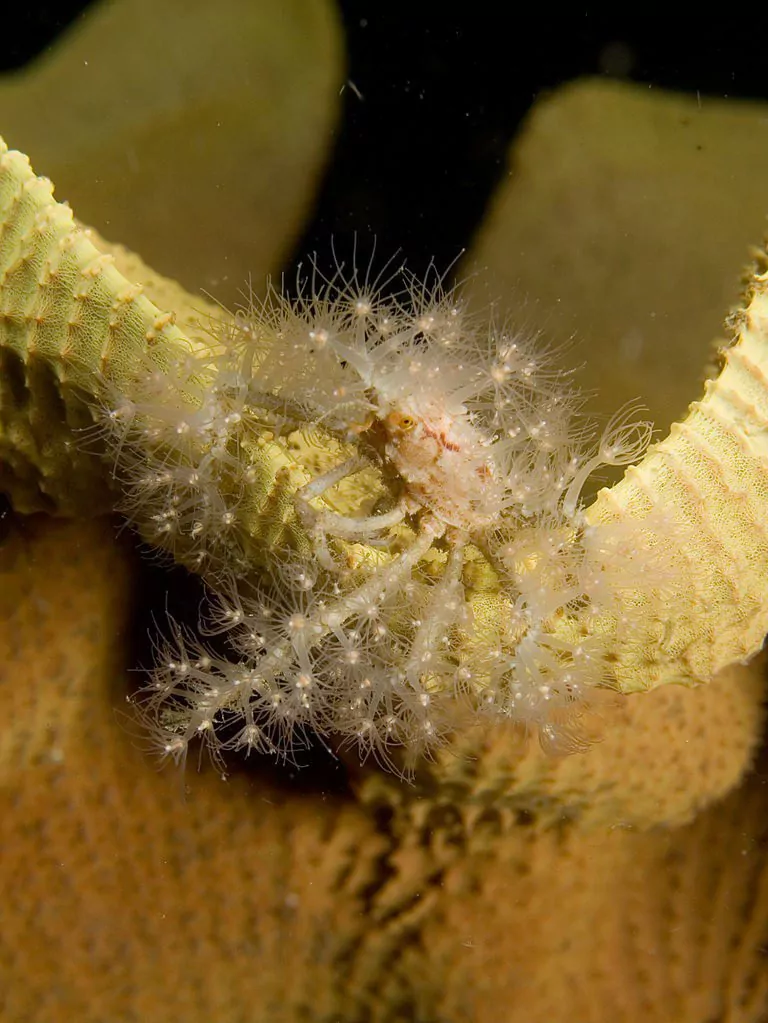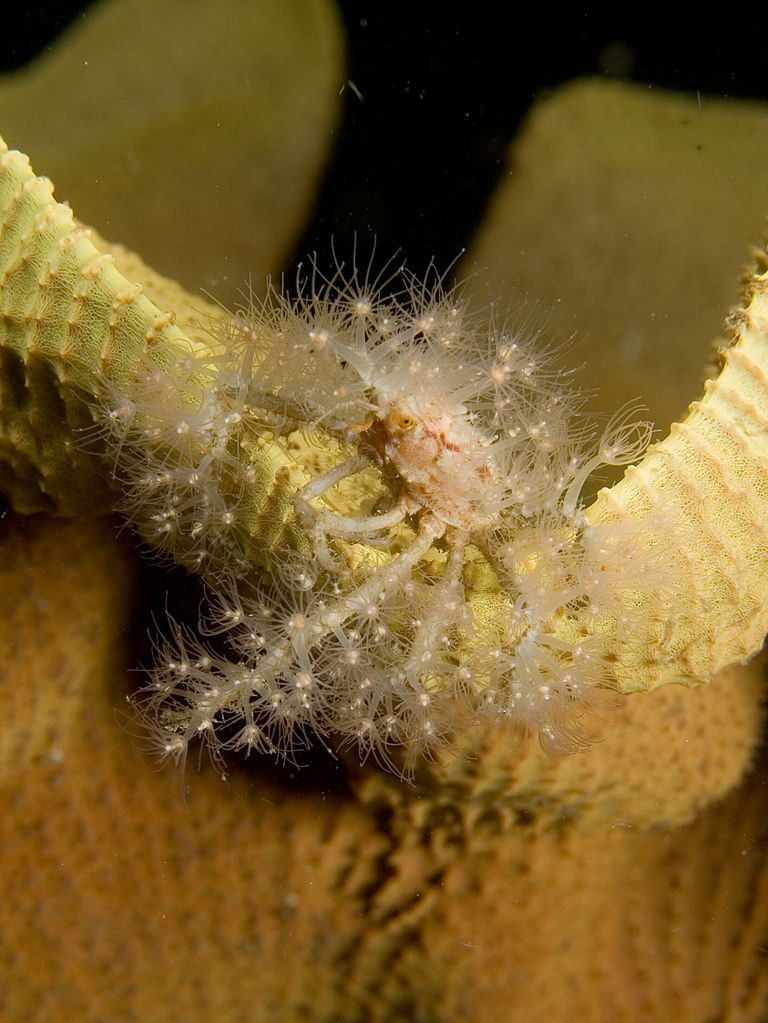Decorator crabs like to cover themselves with invertebrates such as algae, sponges and hydrozoans, and this has always been associated with camouflage and, where the covering includes stinging cells, armed protection from predators.

Now research inspired by holiday scuba-diving has revealed that decorator spider-crabs of the genus Achaeus attach one species of hydrozoan to specific legs – to turn them into fishing-rods.
Marine biologist and hydroid specialist Dr Joan J Soto Àngel of the University of Valencia became aware of the phenomenon during recreational scuba-dives in the northern Red Sea.
Studying macro photographs of the crabs from his dives at night, when they are active, he noticed that they carried the same species of hydroid, Hydrichthella epigorgia.
This prompted him to carry out a full scientific study of live and archived specimens as well as reviewing the work of underwater macro photographers, which revealed that 96% of the decorator crabs carried H epigorgia.
The hydroids would be concentrated on the crabs’ second and third pairs of legs, which the crabs would wave in the current while using their other legs to grip onto coral.
Hydrozoans routinely latch onto the legs and carapaces of crabs so that they will be carried into areas where currents provide zooplankton for them to catch with their polyps.
The crabs are able to move the hitch-hikers around to different parts of their bodies to suit their purposes of camouflage, defence and, it seems, feeding. If their legs are used as fishing-rods, the hydrozoans are the fish-hooks.
Dr Soto Angel believes that the Achaeus decorator crabs favour H epigorgia because, unlike other hydrozoans, it uses its defensive polyps to capture plankton but then has to pass captured prey on to its feeding polyps for digestion.
The crabs are able to intervene in this process and take the food for themselves before it can be transferred.
The finding have been published in Marine Biodiversity.
Divernet – The Biggest Online Resource for Scuba Divers
01-Feb-18

